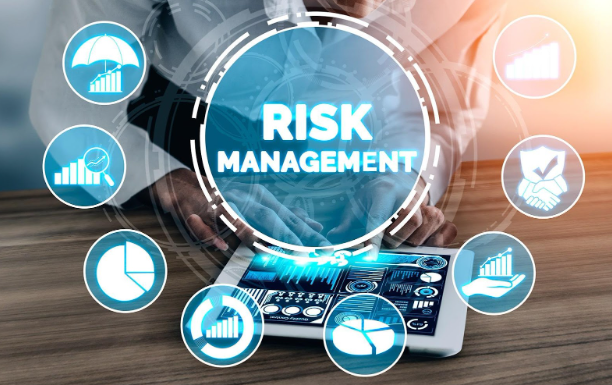Don't hesitate to contact us
404-635-6018
info@securityblox.io
Mon-Fri 9:00 - 5:00 (EST)

Risk Management
Risk management refers to the systematic process of identifying, assessing, and mitigating risks that could compromise the confidentiality, integrity, and availability of an organization’s information assets. It involves analyzing potential threats, vulnerabilities, and their potential impacts to determine the level of risk associated with various assets and activities. The goal of information security risk management is to make informed decisions about how to best allocate resources to minimize and control these risks.
SecurityBlox can help your organization work through the key steps below and establish a mature and robust risk management program.
- Risk Identification: Identify and document all potential risks and threats to your organization’s information assets. This could include unauthorized access, data breaches, malware attacks, natural disasters, and more.
- Risk Assessment: Evaluate the identified risks based on their potential impact and likelihood of occurrence. This involves assigning numerical values or qualitative assessments to the risks to prioritize them.
- Risk Analysis: Analyze the relationship between potential vulnerabilities, threats, and the potential impact on the organization’s information assets. This helps in understanding which risks are the most critical and need immediate attention.
- Risk Evaluation: Determine the acceptable level of risk for your organization. This involves comparing the assessed risks against predefined risk tolerance levels and business objectives.
- Risk Treatment: Develop strategies and controls to manage or mitigate the identified risks. There are several approaches to risk treatment, including:
- Avoidance: Eliminate activities that pose high risks.
- Mitigation: Implement safeguards to reduce the likelihood or impact of a risk.
- Transference: Transfer the risk to a third party, such as through insurance.
- Acceptance: Accept the risk if its impact is within the acceptable range and the cost of mitigation is not justified.
- Implementation of Controls: Put in place security controls and measures to address the identified risks. This could involve implementing technologies, policies, procedures, and training programs to enhance information security.
- Monitoring and Review: Continuously monitor the effectiveness of the implemented controls and reassess the risks periodically. Information security risks are dynamic and can change over time due to evolving threats and vulnerabilities.
- Communication and Reporting: Regularly communicate the status of information security risks to relevant stakeholders, including senior management. Transparency is crucial for making informed decisions and securing support for security initiatives.
- Incident Response Planning: Develop and maintain an incident response plan that outlines how the organization will respond in the event of a security breach or incident. This helps mitigate the impact of security breaches and aids in quick recovery.
- Continuous Improvement: Information security risk management is an ongoing process. Regularly review and improve the risk management program based on new insights, emerging threats, and lessons learned from incidents.
By following a structured risk management approach, organizations can proactively identify and address potential security threats, reduce vulnerabilities, and protect their critical information assets from various risks that could impact their business operations and reputation.
Risk management refers to the systematic process of identifying, assessing, and mitigating risks that could compromise the confidentiality, integrity, and availability of an organization’s information assets. It involves analyzing potential threats, vulnerabilities, and their potential impacts to determine the level of risk associated with various assets and activities. The goal of information security risk management is to make informed decisions about how to best allocate resources to minimize and control these risks.
SecurityBlox can help your organization work through the key steps below and establish a mature and robust risk management program.
- Risk Identification: Identify and document all potential risks and threats to your organization’s information assets. This could include unauthorized access, data breaches, malware attacks, natural disasters, and more.
- Risk Assessment: Evaluate the identified risks based on their potential impact and likelihood of occurrence. This involves assigning numerical values or qualitative assessments to the risks to prioritize them.
- Risk Analysis: Analyze the relationship between potential vulnerabilities, threats, and the potential impact on the organization’s information assets. This helps in understanding which risks are the most critical and need immediate attention.
- Risk Evaluation: Determine the acceptable level of risk for your organization. This involves comparing the assessed risks against predefined risk tolerance levels and business objectives.
- Risk Treatment: Develop strategies and controls to manage or mitigate the identified risks. There are several approaches to risk treatment, including:
- Avoidance: Eliminate activities that pose high risks.
- Mitigation: Implement safeguards to reduce the likelihood or impact of a risk.
- Transference: Transfer the risk to a third party, such as through insurance.
- Acceptance: Accept the risk if its impact is within the acceptable range and the cost of mitigation is not justified.
- Implementation of Controls: Put in place security controls and measures to address the identified risks. This could involve implementing technologies, policies, procedures, and training programs to enhance information security.
- Monitoring and Review: Continuously monitor the effectiveness of the implemented controls and reassess the risks periodically. Information security risks are dynamic and can change over time due to evolving threats and vulnerabilities.
- Communication and Reporting: Regularly communicate the status of information security risks to relevant stakeholders, including senior management. Transparency is crucial for making informed decisions and securing support for security initiatives.
- Incident Response Planning: Develop and maintain an incident response plan that outlines how the organization will respond in the event of a security breach or incident. This helps mitigate the impact of security breaches and aids in quick recovery.
- Continuous Improvement: Information security risk management is an ongoing process. Regularly review and improve the risk management program based on new insights, emerging threats, and lessons learned from incidents.
By following a structured risk management approach, organizations can proactively identify and address potential security threats, reduce vulnerabilities, and protect their critical information assets from various risks that could impact their business operations and reputation.
